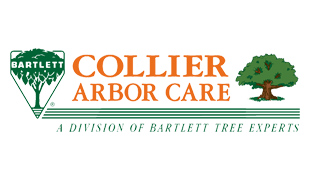|
Current Issue - Spring/Summer 2013 Show Back Issues |
| ||
Lacebug Damage on Plants Adult lacebug on an azalea leaf.
Adult lacebug on an azalea leaf.
Normally a relatively minor problem, lacebug damage has exploded in the landscape this year damaging foliage of rhododendrons, azaleas, and Indian plum (a common native shrub). Lacebugs are tiny 1/4 inch long sucking insects. They are named lacebugs for the lace-like network of veins on their translucent wings. They are actually very pretty to look at with a hand lens. Adults and nymphs suck plant sap from the underside of leaves. This causes the leaf to appear stippled with minute white spots. Later, these small spots merge and the leaves turn yellow. Heavily infested plants become unsightly and vitality is reduced. Severe infestations may cause premature leaf drop, and even the death of small shrubs. The presence of these pests can also be determined by the black tar (fecal) spots they leave on the lower leaf surface.  Tar spots (excrement) from the lacebugs.
Tar spots (excrement) from the lacebugs. Leaf stippling caused by lacebugs sucking out the chlorophyll.
Leaf stippling caused by lacebugs sucking out the chlorophyll.
Lacebugs overwinter in the egg stage and hatching occurs usually in May. The young nymphs pass through five feeding stages (molts) before becoming adults and forming wings. Soap and oil treatments will control lacebugs but it must come in contact with the insect during late spring/early summer on the bottom side of the leaves directly. Oil treatments in the fall help to control overwintering eggs. Neem oil, a botanical insecticide, can also reduce lacebug populations. Collier Arbor Care President Earns Urban Forestry Award Terrill Collier
Terrill Collier
Terrill Collier, president of Collier Arbor Care, has won a 2009 State Urban Forest Award in the professional category for his long time support of urban tree care. Jointly hosted by Oregon Urban Trees and the Oregon Department of Forestry, Collier was recognized for “his efforts as a member of the Portland Urban Forestry Commission, his support for Friends of Trees and other activities on behalf of a healthy and growing urban tree canopy,“ according to Paul D. Ries, urban and community forestry program manager for the Oregon Department of Forestry. The award is one of four given annually. Collier, has been a member of the Urban Forestry Commission for 10 years and has financially sponsored Friends of Trees plantings throughout the metropolitan area as well as contributing his own time and that of his certified arborists. “This award isn’t for one thing. Collier has been a continuing presence in our efforts to protect and create more urban canopy for a number of years. I think the committee felt he deserved the award for his efforts over a period of time,“ said Ries. Collier, who is 2009 chair of the 2000-member national Tree Care Industry Association, also has been active nationally with urban canopies. He and his family have raised around $50,000 for urban tree research by riding in the annual Tour des Trees bicycle ride that raises funds for the Tree Research Education and Endowment Fund (TREE Fund). Among other things, the TREE Fund’s mission is to fund such projects as research into issues surrounding urban trees and urban forests, up to four annual college scholarships and a variety of public awareness programs dealing with the plight of urban canopies. Collier Arbor Care opened in 1937. It is among the oldest and largest full service tree and shrub care companies in the metropolitan area.
|

Knowing what to cut and where are two good reasons to hire a professional arborist to prune your valuable plants. Fall Pruning CalendarThe fall and winter season is an important time to do pruning in the landscape. Trees and shrubs that have not been pruned this year may have grown too large and beyond their designated area. Some trees such as fruit trees are traditionally pruned after the fall harvest. Roses and many perennials are cut back in the fall. Large trees, especially ones near homes and buildings, should be evaluated by a professional arborist (we have 12 certified arborists on staff) for hazard potential. Broken branches, poor branch attachments, excessive long branches, and dangerous trees should be removed or mitigated. Fall is an excellent time to prune your trees before winter storms hit. The following is a check list of fall pruning needs for your landscape:

Tree, Shrubs and Lawn treated under our all-organic, sustainable Soil Management Program. 
Portland area Collier Arbor Care client landscapes that are treated with compost tea. 
Sustainable Soil ManagementAs part of Collier Arbor Care’s sustainability initiative we are proud to announce our soil management program that improves poor soils, promotes healthy soil biology, provides plant nutrition and is all organic. Our program features the use of compost tea, organic fertilizers and Mycorrhizae (a beneficial root fungus) to sustainably enhance landscape soils. Our three times per year program promotes healthy biological soil processes that naturally release plant nutrients, improve soil structure and help prevent harmful disease and pest problems. This innovative all natural program replaces the traditional use of commercial fertilizers that are often over applied and do nothing to enhance the healthy biological activity that is needed for sustainable soil building and nutrient cycling. We have been testing this program for the last three years and have had spectacular results in enhancing biological soil processes as well as making landscapes look and grow great. Here is what some of our customers think about our organic soil management program:“We have been using Collier’s ever growing organic services since they began offering them. We started with the mycorrhiza treatments for our trees, and then became a test site for the compost tea in 2007. The program has been outstanding, with the plants growing bigger and better than ever before. This was verified by the comments I received in June of 2008 during a Master Gardener tour of my garden, during which people exclaimed over and over about the size of my hostas and lush growth throughout the garden. Collier has also used the tea for targeted control of specific pests as well, again with excellent results. I would highly recommend all customers to try the tea — it is better for the garden and the environment.” — Pam of Portland “Their services at our home expanded to…their soil analysis and enrichment program. They are the ‘cream of the crop,’ experts and the right people for tree, shrub, soil and so much more garden care and health.” — Jana of TigardIf you can only do one thing to promote the health and beauty of your landscape plants the Soil Management Program is it! Call today to schedule an assessment of your landscape and find out how our all natural program can promote healthy plants and soil sustainability. 
The erect female cones are small and appear to look like little rose buds. 
Western Red Cedars can be used as a specimen tree, as a screen, or in hedge rows. Featured Tree: Western Red CedarThis Northwest native is found from Northern California to Alaska, and inland to Montana. It grows quickly to 50-75’ high by 15-25’ wide in cultivation and larger in the wild. The growth habit is a narrow pyramidal form, casts a deep shade and keeps it lower branches. The foliage is a bright green with whitish marks (like butterfly wings) on the lower side. The foliage is carried on flat drooping sprays on slender branches. The erect female cones are small but appear as a little rose bud. The bark appears as a bright cinnamon brown color. The trees usually grow as a single stem but occasionally develop multiple trunks which can be prone to breakage. This larger growing tree is useful as a specimen in gardens but is often used as a screen or in hedge rows. It can tolerate shearing, however it is best if allowed to grow naturally. It is a splendid tree when properly grown. It grows in sun or partial shade and prefers a moist well drained soil. An important fact to know is the western red cedar is resistant to root rot that other cedars are susceptible to. It is generally a very insect and disease resistant tree but can have problems if not occasionally watered on dry sites in drought years. There are several varieties such as ‘Hogan’ and ‘Spring Grove’ that grow smaller than the species. If you need a problem free larger tree for a specimen or screening this is your tree. |
|
Home |
Services |
The Arbor Advisor |
Garden Calendar |
About Us |
Fact Sheets |
Contact Us |
Site Map Collier Arbor Care Portland 503-722-7267 Vancouver (360) 693-6056 Site contents and design ©2013 Collier Arbor Care |







 top »
top »